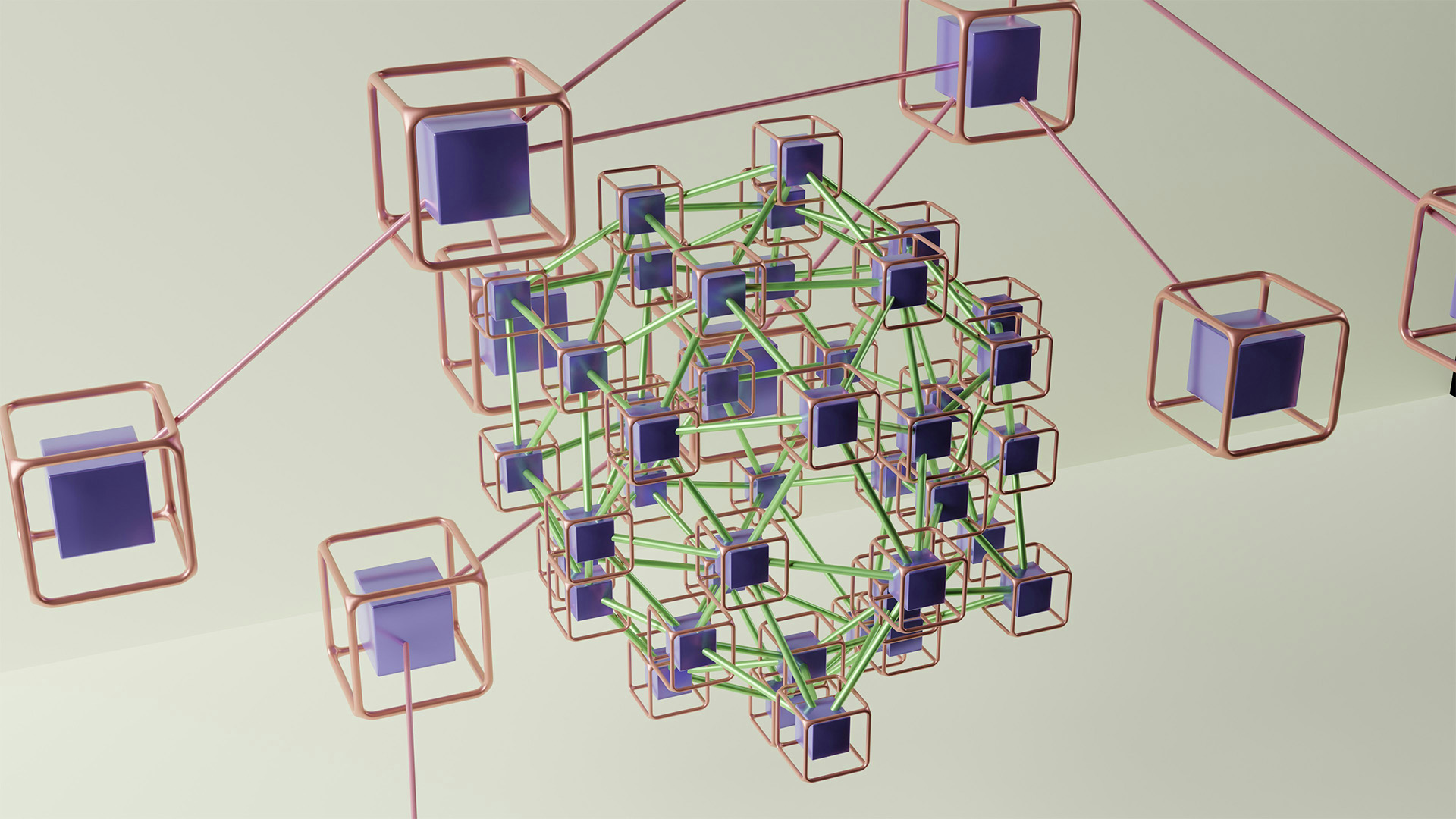Published by
A true digital enterprise typically has three key characteristics: agility, scalability, and resilience. The organization’s approach to software architecture significantly impacts its ability to achieve these qualities and ultimately gain a competitive edge in the marketplace.
Among the recommended approaches for the future-ready enterprise, microservices architecture is a frontrunner. This article will highlight the benefits of this approach, offering our recommendations and insights for those looking to modernize their legacy technology and drive innovation forward.
Why Monolithic Applications Slow Down Innovation
Monolithic applications represent a traditional approach to software development, characterized by a unified, inseparable system. It consolidates all components and functionalities into a single code block that executes within one process. While this approach served well historically, and it is still a reality in many organizations, it presents considerable constraints for the fast-paced needs of the current business landscape.
Key Limitations of Monolithic Architecture:
- Performance Bottlenecks: In monolithic applications, all components share server resources, often resulting in sluggish performance, particularly during high-traffic periods. This resource competition directly impacts user experience.
- Difficult Maintenance: Even minor changes to a monolithic application require redeploying the entire system. This makes maintenance and improvements inherently complex, risky, and time-consuming.
- Reduced Agility: Continuous delivery becomes challenging in monolithic environments. The development cycle tends to be lengthy, hindering quick adaptation to market shifts.
- Limited Scalability: Scaling typically requires replicating the entire monolithic system—an expensive and inefficient approach. For instance, during events like Black Friday, you must scale all components even when only specific elements experience increased load.
- Vulnerability to Failures: A single component failure can compromise the entire monolithic system, even when all other functionalities remain operational.
How Microservices Architecture Drives Agility
Microservices architecture offers a powerful alternative to overcome monolithic limitations. Rather than creating a single system, this approach breaks down applications into small, autonomous services—microservices. Each microservice handles a specific business function and can be independently developed, deployed, and scaled, dramatically enhancing the organization’s agility and innovation capabilities.
Core Principles of Microservices Architecture:
- Focused Responsibility: Each microservice should address a single, clearly defined responsibility, facilitating easier maintenance, development, and scaling.
- Independence: Microservices should be self-contained with dedicated databases and resources, ensuring autonomy and resilience.
- Domain-Specific Design: These services should remain small and focused on specific business domains, enhancing comprehensibility, development efficiency, and deployment ease.
- Clear Communication Pathways: Microservices interact through well-defined APIs, using either synchronous or asynchronous communication based on business requirements.
- Process Automation: Deployment and monitoring should be automated to maximize efficiency and scalability.
Advantages of Embracing Microservices
This highlighted approach generates numerous benefits:
- Enhanced Agility: The capability to deliver small, continuous value increments allows organizations to swiftly adapt to market changes and release new features more frequently.
- Optimized Scalability: The ability to scale individual microservices independently enables more efficient resource utilization and better handling of demand spikes, while simultaneously reducing operational expenses.
- Improved Resilience: Failures in individual microservices don’t compromise the entire system. Other services continue functioning, maintaining platform availability.
- Technology Flexibility: The freedom to select the most suitable technology for each microservice allows organizations to leverage optimal tools for specific challenges.
- Development Parallelism: Dividing work across multiple teams accelerates feature development and deployment, boosting overall productivity.
Transitioning to Microservices: A Strategy for Legacy Migration
Even though the benefits of microservices architecture are well known in the market, legacy monolithic applications are everywhere. Modernization projects are often complex, as legacy technology is deeply embedded in the technical infrastructure. Our approach to this challenge minimizes the risks while guaranteeing value generation in the short term. The “strangler fig” pattern is our recommended strategy; we gradually extract functionalities from existing monoliths and transform them into standalone microservices.
However, before embarking on this transformation journey, we should consider the “Monolith First” perspective championed by software architecture authority Martin Fowler. This approach advocates starting with a well-structured monolith unless compelling reasons exist for immediate microservices adoption. A well-designed monolithic foundation gives teams time to understand system rules, clearly identify business contexts, and then decompose into microservices more effectively when the benefits are clear.
Key Migration Steps We Follow:
- Thorough Assessment: Determine whether microservices migration truly addresses your needs. Evaluate associated costs, benefits, and risks, as this decision impacts your technical ecosystem.
- Comprehensive Planning: Establish a migration strategy, with clear scope and required resources. Effective planning and clear goals are key to successful implementation.
- Domain Mapping: Segment your monolithic system into well-defined business domains. This segmentation becomes more precise after building a structured monolith and gaining deep business domain understanding.
- Systematic Extraction: Convert domain functionalities into independent microservices through careful extraction.
- Strategic Deployment: Roll out microservices in production environments with minimal disruption. In this incremental strategy, a new architecture will coexist with the legacy system until full modernization.
- Continuous Monitoring: Adopt observability strategies, track performance, and identify adjustments to ensure optimal operation.
Navigating Implementation Challenges
Despite its advantages in agility and scalability, microservices architecture presents several challenges that should be considered. Managing numerous microservices introduces complexity, requiring adequate orchestration, monitoring, and logging tools to effectively track performance and troubleshoot issues across the distributed system. Communication between services can become a performance bottleneck without proper implementation strategies, potentially undermining the very efficiency the architecture aims to create. Additionally, maintaining data consistency across distributed microservice databases demands careful design considerations to prevent information discrepancies that could affect business operations.
Team readiness represents another crucial factor, as organizations must prepare their people for the new technologies and processes inherent to microservices architecture. Without adequate preparation, teams may struggle to adapt, limiting the potential benefits of the transition. Perhaps most concerning is the expanded security surface that emerges from the distributed nature of microservices—multiple services and exposed APIs significantly increase potential attack vectors that malicious actors could exploit.
To mitigate these risks effectively, organizations should invest in continuous learning and a shared knowledge base. Establishing clear, documented references for development, deployment, and monitoring ensures consistency across the organization while reducing the likelihood of errors during critical processes. Wherever possible, teams should implement extensive automation to minimize human error and increase efficiency, enabling faster incident response when problems do arise.
Proactive monitoring becomes essential in a microservices environment—implementing robust performance tracking allows teams to identify and address issues before they escalate into significant problems. Security considerations must be comprehensive, including strong identity management and access control systems, API gateways that regulate microservice access, and centralized authentication and authorization mechanisms.
Key Performance Indicators for Microservices Success
Ensuring your microservices architecture delivers positive outcomes requires continuous monitoring of relevant metrics. The DORA (DevOps Research and Assessment) framework provides industry-validated metrics for evaluating not only microservices implementation effectiveness but overall digital delivery efficiency:
- Lead Time for Changes: Measures the time from code commit to production deployment. Shorter lead times indicate greater agility and market responsiveness.
- Deployment Frequency: Tracks how often deployments reach production. Higher frequency, typically associated with smaller release cycles, demonstrates continuous value delivery capability.
- Change Failure Rate: Measures the percentage of deployments causing production issues or requiring rollbacks. Lower failure rates indicate code quality and effective testing processes.
- Mean Time to Restore: Quantifies incident recovery time. Faster restoration demonstrates effective problem response capabilities and minimizes user impact.
Analyzing these metrics helps organizations identify improvement opportunities and make data-driven decisions to plan their modernization journey.
Final Recommendations
For organizations considering microservices adoption, we recommend:
- Carefully evaluate whether microservices truly address your specific needs, considering the “Monolith First” approach where appropriate.
- Develop a modernization plan outlining strategy, scope, and resource requirements.
- Prioritize team training to build competency with microservices technologies and processes.
- Partner with experienced microservices specialists who can guide your migration and ensure project success.
We help organizations overcome legacy technology limitations that hinder growth and agility. Our approach transforms your technology landscape by evolving existing infrastructure and applications to align with modern architectural principles and industry best practices.
Ready to implement microservices architecture in your organization? Contact our experts today to discover how we can help you build flexible, scalable, and resilient systems tailored to your business needs!



